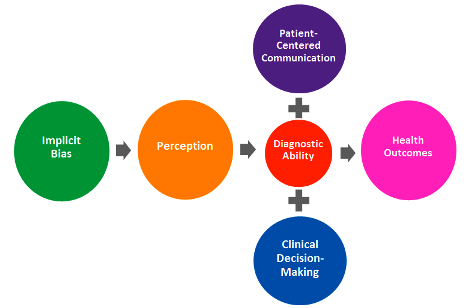First in a series throughout the month of April
April is National Minority Health Month, organized under the auspices of the Office of Minority Health (OMH) within the U.S. Department of Health and Human Services. This year's theme, Prevention is Power: Taking Action for Health Equity emphasizes the critical role of prevention in reducing health disparities. As the OMH page states, “It is a call to action, a charge for all of us to unite towards a common goal of improving the health of our communities. Everyone in America should have the chance to live a healthy life, regardless of who they are and where they live.”
Community Catalyst fully embraces this statement. We share a vision in which we all have the knowledge, skills, and resources to carefully consider promoting health equity in the way that we approach our work. We strive to keep a focus on increasing health equity in all of our programmatic work, and this goal is a key stated policy priority of our Center for Consumer Engagement in Health Innovation in its work on health system transformation.
In promoting the message of Minority Health Month throughout April, this blog kicks off a four-week series that will look both at aspects of health disparities as they currently exist and efforts to break down barriers to achieving equitable health outcomes. But before we turn our attention outward in next week’s post, we’d like to share some recent work our own staff has undertaken to look inward in order to further our understanding of ourselves, and of the challenge ahead in this work.
Health equity is understandably a broad concept. It encompasses a range of interactions that individuals have with the health care system, not only within the standard medical model, but also outside of it. Conditions such as racism, unsafe or unreliable housing, poverty and violence are just a few of the many social determinants of health. Because these conditions often persist across generations and have a profound impact on individual health decisions, it is increasingly difficult to conceptualize health equity without first constructing a social justice framework. In unraveling the complexities of these components, we must first look to address the interdependent social processes that influence health and health care delivery.
Last month, the Perception Institute facilitated a training at Community Catalyst to examine the systemic impact of implicit bias and equip staff with the tools to engage in meaningful discussions about the implications those biases have. Implicit biases are automatic associations that are expressed through attitudes and stereotypes, which then influence judgements and discriminatory behavior toward particular groups of people. These perceptions are often expressed separately from our conscious values and intentions. Through a series of exercises, each of us who participated in the training had the opportunity to personally reflect on how subtle and ingrained these biases can be.
Our conversations during the implicit bias training session reinforced the reality that implicit biases continue to have a pervasive impact in our healthcare system. Recently, there has been a flurry of media attention around implicit biases influencing the false beliefs some providers hold about biological differences between Blacks and Whites. There is also an extensive body of research demonstrating that implicit bias is a major source of disparities in delivery, access and the quality of care. The diagram below illustrates implicit bias during clinical encounters as a process for which we can conceptualize how biases influence health outcomes.

Using innovative tools like the Implicit Association Test (IAT) and other variations to detect the types of biases that individuals hold, researchers have frequently observed disparities in provider treatment recommendations.
- A recent study by the University of Virginia identified implicit bias in how medical students made recommendations to treat pain. Not only were black patients routinely under-treated for their pain compared with white patients with the same ailments, but some medical students actually held false beliefs that blacks felt less pain than whites.
- An analysis from the Journal of General Internal Medicine revealed that although providers explicitly indicated that they did not hold patient preferences, IATs consistently demonstrated implicit preferences toward white patients. Additionally, the more implicit bias providers had in favor of white patients, the more likely they were to recommend thrombolysis treatment for white patients while not recommending treatment for black patients.
- Researchers have also found that age bias resulted in an underutilization of breast conservation therapy, an alternative to a modified radical mastectomy for stage I and II breast cancers. Providers were found to recommend mastectomy more frequently for women who were older than 59 years old than for women who were younger than 31 years old. Furthermore, breast reconstruction was recommended for 96 percent of younger patients as opposed to 70 percent of older patients.
- More findings from the American Journal of Public Health determined that providers often expressed a preference for treating heterosexual patients over lesbian women and gay men.
Studies that identify such patient preferences are notable because compelling evidence suggests that negative perceptions of patients often lead to poor provider communication during medical visits, which in turn contribute to experiences of perceived discrimination and poor quality of care.
Compounded with a series of empirical evidence is the historical context of distrust that consumers and providers inevitably confront at various points along the healthcare continuum. Many early principles of medicine originated from the once dominant policies of discrimination that underscored racist, sexist, and heterosexist ideologies. A meaningful intervention must therefore be systemic and cross sectoral.
Understanding the impact of implicit bias is one step towards building and maintaining awareness with the hope that such awareness will lead to accountability and change. Community Catalyst will continue to build upon our internal capacity to understand implicit bias in health care and promote health equity in our outward-facing policy efforts.
Please watch this space throughout April as we continue our Minority Health Month blog series.
